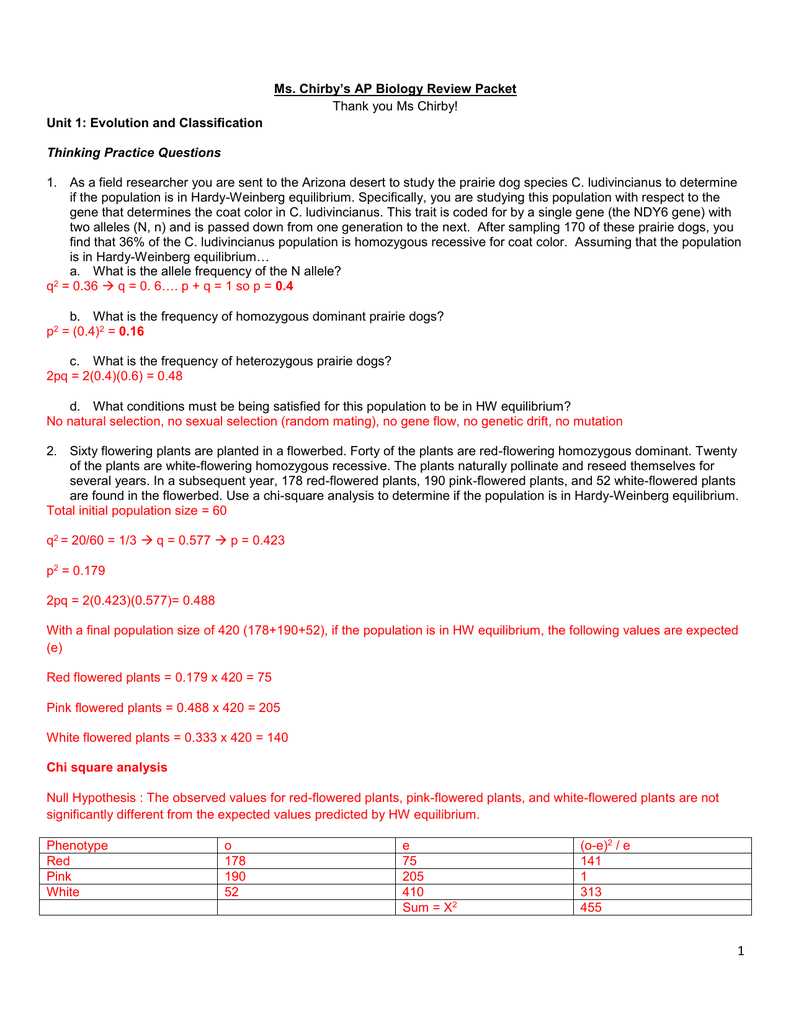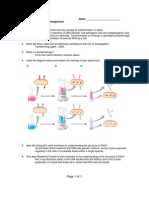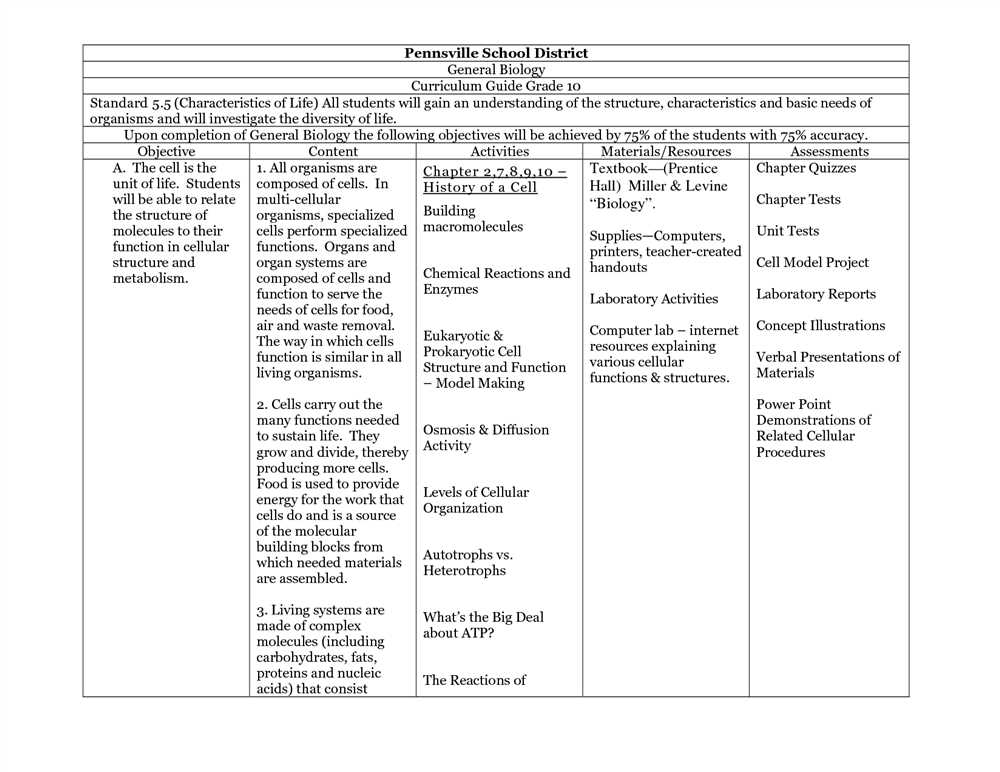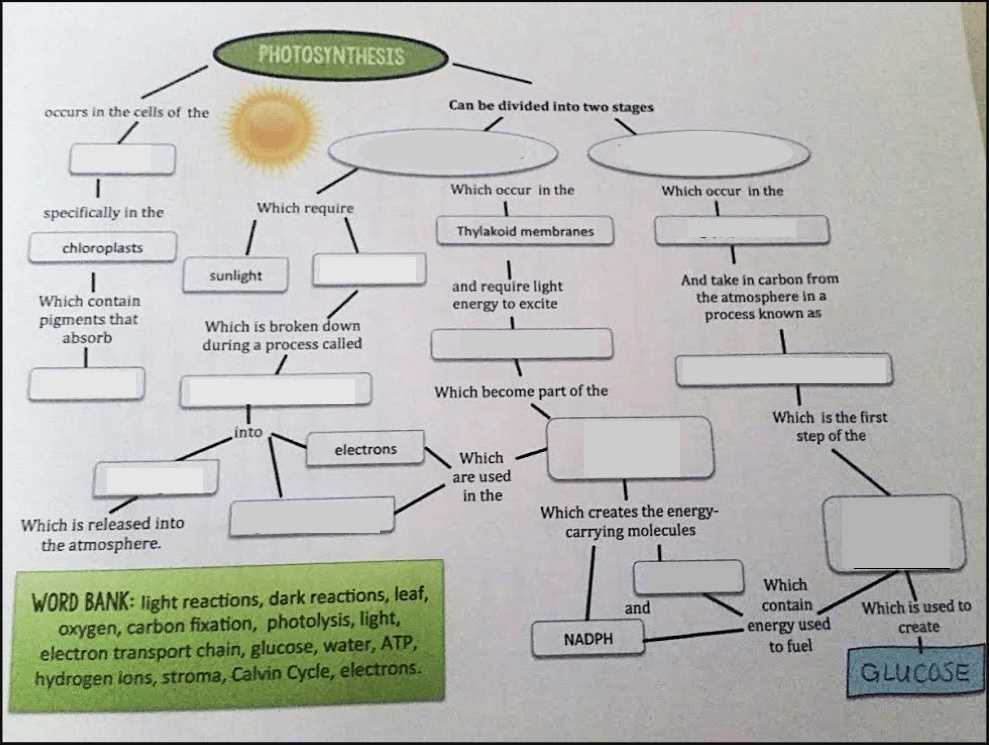
In Chapter 22 of the AP Biology course, students are introduced to the concept of evolution and the patterns of biodiversity that exist on our planet. As a foundational topic in biology, understanding evolution is crucial to comprehending the processes that have shaped life as we know it.
Throughout the chapter, students will delve into various aspects of evolution, including the formation of new species, factors that contribute to speciation, and patterns of biodiversity within ecosystems. As they read through the accompanying guide, they will encounter a series of questions that will prompt them to think critically about the material and apply their knowledge to real-world scenarios.
The answers discussed in this guide will not only provide a thorough understanding of the chapter’s content but also help students form connections between different concepts. By explaining the answers in detail, we aim to clarify any confusion and enhance comprehension for those preparing for the AP Biology exam.
Chapter 22 AP Biology Reading Guide Answers: Overview
In Chapter 22 of the AP Biology reading guide, we explore the topic of descent with modification and how it leads to the formation of new species over time through the process of natural selection. This chapter focuses on the mechanisms of evolutionary change, including mutation, genetic drift, gene flow, and natural selection.
Key Concepts:
- Descent with modification: The idea that all organisms share a common ancestor and have evolved over time through the accumulation of small changes.
- Natural selection: The process by which individuals with certain heritable traits are more likely to survive and reproduce, leading to the gradual change of a population over time.
- Mutation: A random change in the DNA sequence of an organism’s genome, which can lead to the formation of new traits and genetic variation within a population.
- Genetic drift: Random changes in allele frequencies within a population due to chance events, such as the random sampling of individuals in each generation.
- Gene flow: The transfer of alleles between populations through the movement of individuals or gametes, which can lead to the spread of beneficial traits.
In this chapter, we will also examine the concept of speciation, which is the process by which new species arise. We will explore the different mechanisms of speciation, including allopatric and sympatric speciation, and discuss the factors that can contribute to reproductive isolation.
Overall, this chapter provides a comprehensive overview of the mechanisms of evolutionary change and the formation of new species, shedding light on the diverse and complex nature of life on Earth.
Understanding the Key Concepts Covered in Chapter 22 of AP Biology
In Chapter 22 of AP Biology, students delve into the fascinating world of evolution, specifically focusing on the process of speciation. Speciation refers to the formation of new and distinct species over time. This chapter explores the different mechanisms by which speciation can occur and the factors that contribute to it.
One key concept covered in this chapter is allopatric speciation. This occurs when a population is separated into two or more geographically isolated groups. Over time, these isolated populations may evolve independently due to different selective pressures and genetic drift. Eventually, reproductive isolation may occur, preventing interbreeding between the populations and leading to the formation of new species.
Another concept discussed is sympatric speciation. Unlike allopatric speciation, sympatric speciation occurs within the same geographic area. This can happen when a single population undergoes significant genetic changes that result in reproductive isolation. This may be due to factors such as polyploidy, where an organism has extra sets of chromosomes, or through disruptive selection, where individuals with extreme traits have a selective advantage.
The role of natural selection in speciation is also emphasized in this chapter. Natural selection acts as a driving force in the evolution of new species. It can lead to adaptations that enhance an organism’s survival and reproductive success in its specific environment. Through the process of natural selection, individuals with advantageous traits are more likely to survive and pass on their genes, leading to the divergence of populations and eventual speciation.
Furthermore, the importance of genetic variation and gene flow in speciation is explored. Genetic variation is the raw material upon which natural selection can act, allowing for the adaptation of populations to changing environments. Gene flow, on the other hand, refers to the movement of genes between populations through migration or interbreeding. Both genetic variation and gene flow play significant roles in speciation, as they can either promote or hinder the formation of new species.
In conclusion, Chapter 22 of AP Biology provides a comprehensive overview of speciation and the key factors involved in the formation of new species. By understanding the mechanisms of speciation, students can gain a deeper insight into the complexities of evolution and the diversity of life on our planet.
Key Terms and Definitions: Chapter 22 AP Biology Reading Guide Answers
In Chapter 22 of AP Biology, several key terms and definitions are discussed, providing a comprehensive understanding of the topic at hand. Here are some of the important terms and their meanings:
- Gene expression: The process by which information from a gene is used in the synthesis of a functional gene product, such as a protein or RNA molecule.
- Transcription: The process by which an RNA molecule is synthesized from a DNA template, resulting in the production of messenger RNA (mRNA).
- Translation: The process by which the sequence of nucleotides in mRNA is converted into a sequence of amino acids in a protein.
- Genotype: The genetic constitution of an individual organism, typically in terms of the alleles present at a specific gene or set of genes.
- Phenotype: The observable traits or characteristics of an organism, resulting from the combined effects of its genotype and the environment.
- Mutation: A permanent change in the nucleotide sequence of DNA, which can lead to alterations in gene expression and protein function.
- Operon: A unit of genetic material that consists of a promoter, an operator, and one or more structural genes that encode proteins involved in a specific metabolic pathway.
- Regulatory sequence: A segment of DNA that controls the expression of nearby genes, typically by binding to specific transcription factors.
These key terms are important to understand in the context of Chapter 22 of AP Biology, as they provide the foundation for comprehending the concepts and processes related to gene expression and regulation. By understanding these terms and their definitions, students can better grasp the material and apply their knowledge to various biological scenarios.
Defining important terms related to Chapter 22 of AP Biology
In Chapter 22 of AP Biology, several important terms are discussed that are relevant to understanding the concepts and processes related to the study of evolution. These terms include:
1. Macroevolution

Definition: Macroevolution refers to the large-scale changes that occur over long periods of time, resulting in the formation of new species or higher taxonomic groups. It involves the study of how species evolve, diverge, and adapt to their environments.
2. Microevolution
Definition: Microevolution refers to the small-scale changes that occur within a population or species over a relatively short period of time. These changes can be observed through shifts in allele frequencies, changes in gene pools, and other genetic variations that can lead to adaptations and the potential for speciation.
3. Natural Selection
Definition: Natural selection is the process by which certain heritable traits become more or less common in a population over time due to their effects on survival and reproduction. It is a key driving force of evolution, as individuals with advantageous traits are more likely to survive and reproduce, passing on those traits to future generations.
4. Adaptation
Definition: Adaptation refers to the process by which individuals or species acquire certain traits or characteristics that enable them to better survive and reproduce in their environment. These traits can be physical, physiological, or behavioral, and they increase an organism’s fitness and chances of survival.
5. Speciation

Definition: Speciation is the formation of new and distinct species from existing ones. It occurs when populations of the same species become genetically isolated and diverge over time due to various factors, such as reproductive barriers, geographic isolation, or genetic mutations.
6. Genetic Variation
Definition: Genetic variation refers to the diversity of genes and genetic traits within a population or species. It is the raw material for evolution, as it provides the basis for natural selection to act upon. Genetic variation can arise through genetic mutations, gene flow, genetic recombination, and other mechanisms.
7. Gene Flow

Definition: Gene flow is the transfer of genetic material, such as alleles or genes, between populations. It occurs through migration or interbreeding between individuals or groups from different populations, resulting in the movement of genetic traits and the potential for genetic mixing and diversity.
In summary, Chapter 22 of AP Biology introduces several important terms related to the study of evolution, including macroevolution, microevolution, natural selection, adaptation, speciation, genetic variation, and gene flow. Understanding these terms is essential for comprehending the processes and mechanisms involved in the evolutionary changes observed in living organisms.
Processes of Evolution: Chapter 22 AP Biology Reading Guide Answers

In Chapter 22 of the AP Biology reading guide, we explore the various processes of evolution and how they contribute to the diversity of life on Earth. These processes include natural selection, genetic drift, gene flow, and mutation.
Natural selection is a driving force of evolution in which individuals with traits that are advantageous in their environment are more likely to survive and reproduce, passing on those traits to future generations. This process leads to the gradual accumulation of beneficial adaptations and the elimination of less favorable traits.
Genetic drift is another process of evolution that occurs due to random chance. It is more prominent in small populations and can lead to the loss or fixation of certain alleles. Genetic drift can have a significant impact on the genetic makeup of a population over time.
Gene flow refers to the transfer of genetic material from one population to another through migration or interbreeding. This process can introduce new alleles into a population, increasing genetic diversity. It can also help prevent the formation of separate species by maintaining gene flow between populations.
Mutation is a fundamental process in evolution as it generates new genetic variation. Mutations are random changes in the DNA sequence and can occur spontaneously or as a result of environmental factors. These changes can lead to the creation of new traits, which can be advantageous, neutral, or detrimental to an organism’s survival.
By understanding these processes of evolution, scientists can gain insights into how species adapt and change over time. They can also analyze the genetic diversity within and between populations to study the mechanisms driving evolutionary processes and to make predictions about future evolutionary patterns.
Exploring the different processes that contribute to evolution
Evolution, the process by which species change over time, is influenced by a variety of different processes. One key process is natural selection, which acts on variations within a population to favor individuals with traits that give them a selective advantage. Through this process, certain traits become more common in a population over time, while others may decrease in frequency or disappear entirely.
Mutations, or changes in the genetic material of an organism, are another important process contributing to evolution. Mutations can introduce new variations into a population, which may be advantageous, neutral, or detrimental. Over generations, beneficial mutations can become more prevalent through natural selection, leading to evolutionary change.
Another process contributing to evolution is genetic drift, which describes random changes in the frequency of certain traits within a population. Genetic drift can be particularly influential in small populations, where chance events can have a significant impact on allele frequencies. This can lead to the fixation of certain traits or the loss of others, independent of their selective advantage.
Migration, or the movement of individuals between populations, is also an important process in evolution. Migration can introduce new genetic material into a population, leading to increased genetic diversity. It can also contribute to gene flow between populations, which can homogenize traits or lead to the formation of distinct subpopulations.
These processes, among others such as sexual selection and gene flow, all contribute to the complex and dynamic nature of evolution. Through their interactions, they shape the genetic makeup and phenotypic characteristics of populations over time, resulting in the incredible diversity of life on Earth.
Genetic Variation and its Role in Evolution: Chapter 22 AP Biology Reading Guide Answers
In Chapter 22 of the AP Biology reading guide, the concept of genetic variation and its role in evolution is explored. Genetic variation refers to the diversity of genotypes within a population. This variation arises from mutations, gene flow, genetic recombination, and genetic drift. Understanding genetic variation is crucial in understanding how populations adapt and evolve over time.
One key mechanism of genetic variation is mutation. Mutations are changes in the DNA sequence and can occur spontaneously or be induced by environmental factors. These mutations can lead to new alleles being introduced into a population, increasing genetic variation. Mutations can be beneficial, detrimental, or neutral, and their impact on evolution depends on the environment and the selection pressures acting on the population.
Another source of genetic variation is gene flow, which occurs when individuals migrate between different populations and bring their alleles with them. Gene flow can introduce new alleles into a population and increase genetic diversity. It can also prevent populations from diverging and becoming reproductively isolated, which is an important factor in speciation.
Genetic recombination, which occurs during sexual reproduction, is another important mechanism of genetic variation. During meiosis, homologous chromosomes exchange genetic material through crossing over, leading to new combinations of alleles. This process creates genetic diversity and allows for the shuffling of genetic material between individuals.
Finally, genetic drift, which refers to random changes in allele frequencies due to chance events, can also contribute to genetic variation. Genetic drift is more pronounced in small populations and can lead to the loss of certain alleles or the fixation of others. This can result in genetic bottlenecks and founder effects, which can have significant impacts on the genetic diversity of populations.
In conclusion, genetic variation is a fundamental concept in biology, particularly in the realm of evolution. Understanding the mechanisms that contribute to genetic variation is crucial in understanding how populations adapt and evolve over time. The concepts explored in Chapter 22 of the AP Biology reading guide provide a comprehensive overview of genetic variation and its role in evolution.